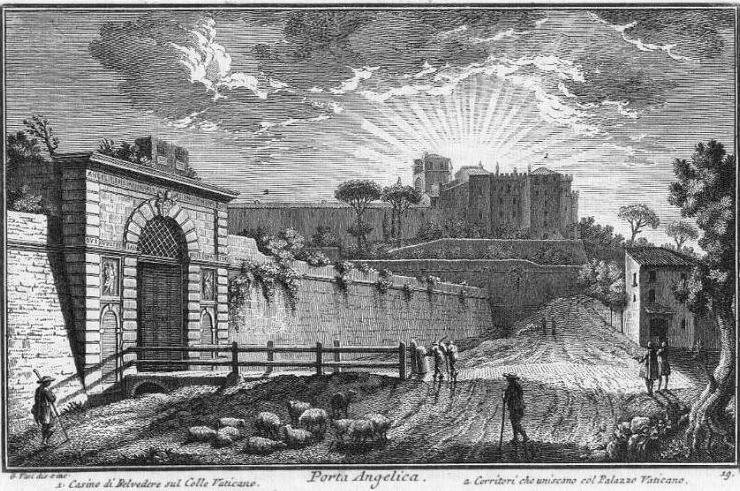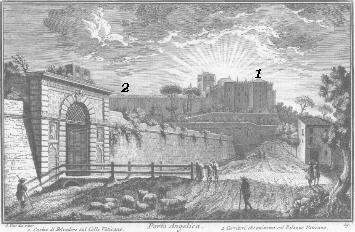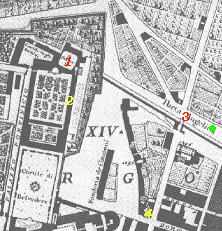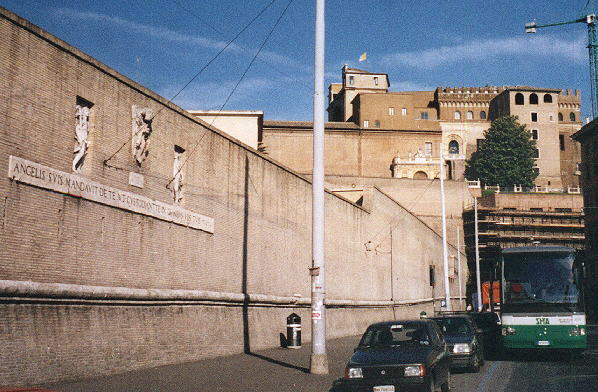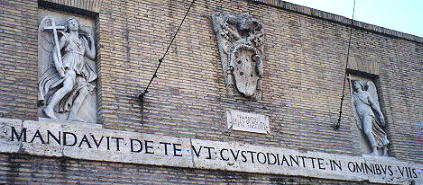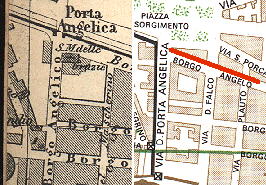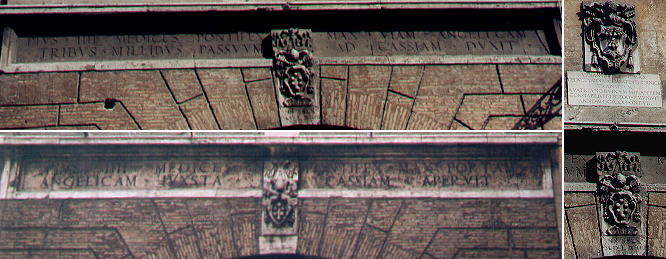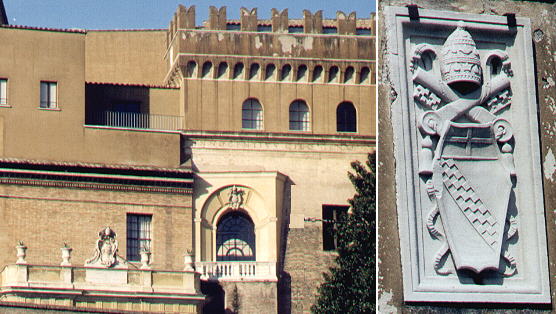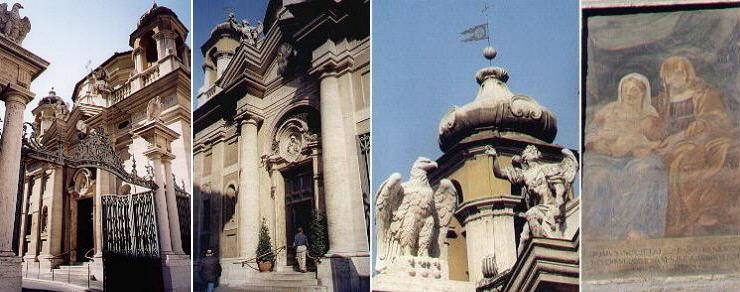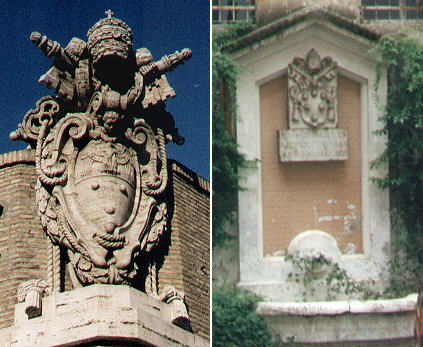  Porta Angelica (Book 1) (Map D1) (Day 8) (View C2) (Rione Borgo) In this page:
This plate is one of my favourites. At sunset sharp lights and shadows
hit the buildings, the shepherds and their sheep preparing for the night.
The view is taken from the green dot in the small 1748 map here below.
In the description below the plate Vasi made reference to: 1) Casino di Belvedere;
2) Corridors linking the Casino with Palazzo Vaticano. 1) is shown in another page.
The small map shows also: 3) Porta Angelica;
4) S. Anna dei Palafrenieri.
The line of the walls was modified after 1929, when an agreement was reached between Italy and the Holy See. In order to reflect the border of the Vatican City State a new wall was built between Porta Angelica and St. Peter's square, whilst the wall leading to Castel Sant'Angelo was pulled down including Porta Angelica, named after Pope Pius IV (Giovanni Angelo Medici) and dedicated to the Guardian Angel.
The angels and the coat of arms of Pius IV have been rearranged in Piazza Risorgimento, a large square named after the movement which led to the Italian unity. Pius IV had a great role in improving the access to Rome. In addition to Porta Angelica he built Porta Pia, Strada Pia, a straight road linking this gate with Palazzo del Quirinale and Strada Angelica another road linking Porta Angelica with Ponte Milvio and Via Cassia. This road is celebrated in inscriptions above an opening (the crossed box in the map) in the ancient walls of the Vatican (il Passetto) which allowed easy access to Porta Angelica and Strada Angelica. Urbanus VIII did not fail to add his coat of arms to that of Pius IV.
The palace was built by Innocentius VIII (see inscription and coat of arms) in the form of a fortress (the walls were not there). In the late XVIIIth century it started being used to host the Papal Collections (what is now the Vatican Museum) and Pius VI opened a balcony to bring light to the octagonal courtyard and its famous sculptures, among which the Apollo Belvedere. Belvedere means nice (Bel) seeing (vedere) and it is the name of the Palace which commands a fine view.
Porta S. Anna is the commercial entrance to the Vatican. Every morning
a flow of civil servants get to work under the scrutiny of a Swiss guard.
The Swiss guards have their barracks and stables opposite the church.
The Walls between Porta Angelica and Porta Castello
On the left the modern coat of arms of Pius XI which celebrates the
completion of the new wall. A Pius IV's coat of arms of the old walls can
be seen in the courtyard of a building in Via Stefano Porcari.
Next plate in Book 1: Porta Castello Next step in Day 8 itinerary: Chiesa di S. Maria delle Grazie
Go
to |
All images © 1999 - 2003 by Roberto Piperno. Write to romapip@quipo.it
